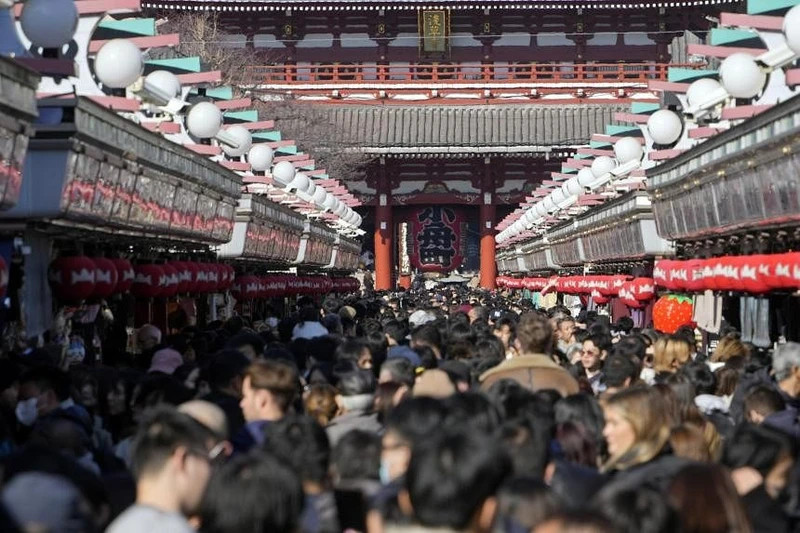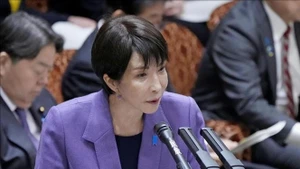At the cabinet meeting on July 19, Japanese Prime Minister Kishida Fumio said that the number of foreign tourists to Japan is expected to be 35 million in 2024, surpassing the record of 31.88 million in 2019, leading to record international tourist spending of about 8 trillion yen (50 billion USD) due to the weak yen.
To increase revenue from this key economic sector, the Japanese Government aims to attract 60 million foreign tourists each year from 2030 through promoting the expansion of domestic tourism and developing sustainable tourism areas.
According to monthly data published by the Japan National Tourism Organisation, the country welcomed about 3.14 million international visitors in June, an increase of 51.2% over the same period in 2023, marking new monthly record.
This is also the 4th consecutive month exceeding the milestone of 3 million foreign visitors to Japan. The Republic of Korea ranked first in the number of visitors to Japan in June with more than 700,000 visitors, an increase of 29% over the same period in 2023, followed by China with about 660,000 visitors. Besides, the weak yen also pushed tourism spending to a new high of about 2.1 trillion yen (13 billion USD) in the April-June period.
Although Japan’s tourism industry is flourishing, the skyrocketing number of tourists also causes many challenges such as traffic congestion, environmental pollution, disruption of local residents’ lives and other related problems when tourists do not comply with local regulations.
In that context, Prime Minister Kishida pledged to take measures to solve the problem of overtourism, including attracting tourists to less-traveled areas and reducing the traffic congestion and violations of traditional Japanese etiquette.
To attract foreign tourists to rural areas, the Japanese Government will consider establishing a financial support programme to expand flights to local airports. 20 regions across Japan were chosen as pioneering models to raise awareness of tourist behaviour.
Meanwhile, the Japanese Government said it will add six more regions to the list and plan to compile guidelines to solve the problem of overtourism by the end of this year. In an effort to meet the increasing demand for immigration, the Japanese Government is planning to introduce a new system to help shorten immigration time for foreign visitors from early 2025.
The new system called “pre-clearance” allows international travelers to take advantage of waiting time at the departure airport to complete most immigration procedures into Japan. Upon arrival, visitors can enter the country smoothly and quickly with just a simple check-in procedure.
In addition, the Japanese Government decided to develop guidelines by the end of this year to cope with tourism overload. The guidelines are expected to consider issues such as tolls at tourist destinations and the imposition of special fees for foreign visitors.
Overtourism, also known as “tourism pollution”, affects the lives of local people and becomes a serious problem. Local governments in Japan are rushing to secure financial resources to cover the costs of countermeasures such as considering applying an accommodation tax regime to have more funding to improve service quality. The Japan Association of Corporate Executives has proposed a draft law to legislate the accommodation tax and apply it from 2026 as a stable source of revenue to restore the tourism industry.
















